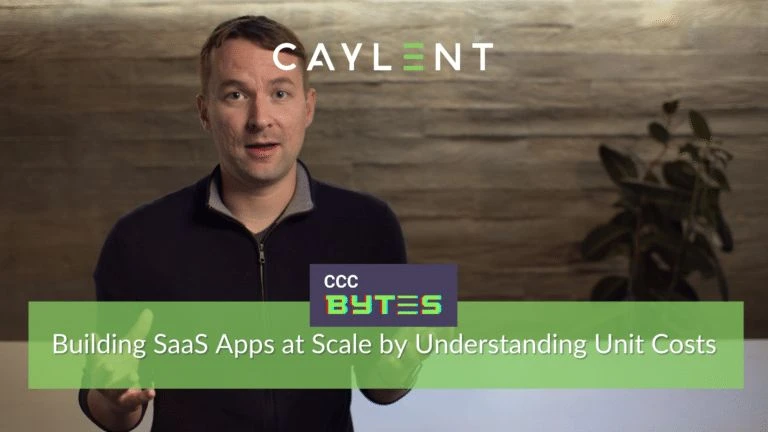
Caylent Industries
SaaS & ISV
Revolutionize your SaaS and ISV solutions on AWS.
Leveraging the AWS Cloud and a Serverless infrastructure for your SaaS apps, allows you to remove granular infrastructure considerations such as compute and storage. Learn how this simplifies your unit costs per user and helps you build SaaS products more efficiently.

Let's consider how the cloud works from first principles. Why would you use a cloud in the first place? Well, you could run your own data centers. You could build your own compute. You could do everything. You could even build your own AWS if you really, really wanted to and you had a lot of money. But what you get when you use a cloud provider like AWS is an abstraction layer over electricity, over networking, and over all of these different complicated services that you would need to manage, while also realizing efficiencies of scale.
When you move into AWS managed services, you're going one more level above that with a layer of abstraction over that fundamental architecture. This would be something like, Amazon RDS, which is a managed service that allows you to spin up different kinds of database engines, and AWS will manage that underlying compute infrastructure for you. Moving one level up from that, you have another layer of abstraction, which we've come to call "Serverless".
And of course, Serverless has servers, but what you're doing with Serverless is you're saying - "I'm willing to pay a dollar cost to cover the abstraction over my underlying compute so that I'm no longer thinking about instances & I'm no longer thinking about storage. All I'm thinking about is the request and the demands of my application and how I can deliver those as efficiently as possible."
When you reason about your applications from first principles and you think about each of those levels of abstraction, you can go and work out a unit cost per customer that can move around your application and inform architecture decisions about when you should use Serverless, when you should use a managed service, or when you should go right back down to the bare hardware.
This is how you should think about your applications at scale, and this is how you decide what the right kind of architecture for your application and your customers is.
If you’re building SaaS applications and would like help with strategizing the right infrastructure for your needs, get in touch with our Cloud Native App Development experts.

Randall Hunt, Chief Technology Officer at Caylent, is a technology leader, investor, and hands-on-keyboard coder based in Los Angeles, CA. Previously, Randall led software and developer relations teams at Facebook, SpaceX, AWS, MongoDB, and NASA. Randall spends most of his time listening to customers, building demos, writing blog posts, and mentoring junior engineers. Python and C++ are his favorite programming languages, but he begrudgingly admits that Javascript rules the world. Outside of work, Randall loves to read science fiction, advise startups, travel, and ski.
View Randall's articles
Caylent Industries
Revolutionize your SaaS and ISV solutions on AWS.

Caylent Services
Deliver high-quality, scalable, cloud native, and user-friendly applications that allow you to focus on your business needs and deliver value to your end users faster.

Caylent Catalysts™
Design new cloud native applications by providing secure, reliable and scalable development foundation and pathway to a minimum viable product (MVP).


Learn how understanding tokenomics helps organizations optimize the cost and profitability of their generative AI applications—making them both financially sustainable and scalable.

Reduce GenAI costs with five proven strategies, from agentic architectures to advanced retrieval. Optimize performance, scale efficiently, and maximize AI value.

Learn the differences between multithreading and multiprocessing, and the right configuration for different types of applications. This comprehensive guide uses a relatable post office analogy to explain complex concepts, helping you optimize your Lambda functions for better performance and cost-efficiency.